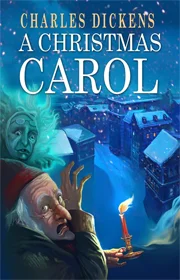
“A Christmas Carol” follows the journey of Ebenezer Scrooge, a miserly and bitter old man who despises the spirit of Christmas and everything associated with it. On Christmas Eve, Scrooge is visited by the ghost of his former business partner, Jacob Marley, and three spirits who take him on a transformative journey through his past, present, and potential future. These spectral visits challenge Scrooge to confront his own choices and attitudes, leading to a profound change in his heart and outlook on life. The story is a timeless exploration of redemption, compassion, and the true meaning of Christmas.
Read A Christmas Carol Flipbook:
Listen to A Christmas Carol Audiobook:
Title: A Christmas Carol
Author: Charles Dickens
Published: Originally published in 1843
Genre: Novella, Victorian literature, Christmas fiction
Setting: 19th-century London, during Christmas Eve
Protagonist: Ebenezer Scrooge, a miserly and cold-hearted old man
Plot: Scrooge is visited by the ghost of his former business partner, Jacob Marley, and three spirits – the Ghost of Christmas Past, the Ghost of Christmas Present, and the Ghost of Christmas Yet to Come (or Future).
Transformation: Through these visits, Scrooge witnesses scenes from his past, present, and potential future. The experiences soften his heart, making him realize the importance of kindness, generosity, and the spirit of Christmas.
Themes: Redemption, compassion, the true meaning of Christmas, and social responsibility
Characters:
• Ebenezer Scrooge: The main character, a miserly and initially bitter old man
• Bob Cratchit: Scrooge’s underpaid and kind-hearted clerk
• Tiny Tim: Bob Cratchit’s disabled son, representing the plight of the poor
• Ghosts: Jacob Marley, Christmas Past, Christmas Present, and Christmas Yet to Come
Famous Quotes:
• “Bah, humbug!” – Scrooge’s catchphrase
• “God bless us, every one!” – Tiny Tim’s famous line
• “I will honor Christmas in my heart and try to keep it all the year.” – Scrooge’s transformational resolution
Legacy: A Christmas Carol is a timeless classic, adapted into numerous films, plays, and other media. It remains a beloved and enduring story that captures the spirit of Christmas and the importance of compassion.